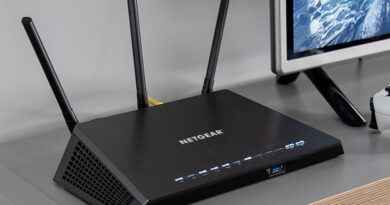Intel Pentium Gold vs. Pentium Silver vs. Celeron: What’s the Best Budget CPU?
Intel’s flagship CPUs receive a lot of attention. There are four different Core i9 processors: i9, i7, i5, and Core i3, which are the most powerful. Pentium and Celeron lineups might seem like a distant memory these days.
The legendary Intel CPUs are still being made today. These days, however, they are reserved for ultra-budget CPUs. The question is, can you expect good results if you buy an Intel Pentium Gold, Pentium Silver, or Celeron chip? If yes, which one is better, and what is the difference between them?
Pentium Gold: Multithreading On The Cheap
It was the Pentium D, which was an absolute trainwreck, that gave birth to the Pentium name. New CPUs aren’t the first thing that comes to mind when you think of Intel.
In spite of this, if you only have $60 in your pocket, the Pentium Gold might be worth considering.
The Pentium Gold comes in two flavors: laptops and desktops. While using Pentium processors, you may experience Zoom crashing issues, check out our guide to fix that.
There is a desktop version and a mobile version. The Pentium Gold is based on the same Alder Lake architecture as the Core CPUs, so it will be similar to the 12th generation CPUs. A Pentium Gold CPU is a dual-core processor instead of having multiple cores like higher-end CPUs. It’s that simple. Not a single frill, not a single fluff. Basic tasks can be accomplished with just two cores.
With recent Pentium Gold chips, however, you have four threads in addition to two cores, giving you four cores and expanded threading capabilities. Despite not having a complete set of four cores, you have extended multithreading capabilities.
There is no doubt that Pentium Gold G7400T CPUs are pretty good, but their clock speeds are not as high as some Intel CPUs that reach 5GHz. Furthermore, this chip has a Thermal Design Power of 35W, which means it produces very little heat.
Pentium Silver: Ultra Low Power for Cheap Laptops
Pentium Silver might seem like a less powerful version of Pentium Gold now that you’ve seen Pentium Gold. That’s partially true, but that’s also incorrect.
There are four cores and four threads on the Pentium Silver N5000. The four cores run at a base clock of 1.1GHz and are actually quite power-efficient. However, the chip only consumes 6W, so you can expect a pretty decent battery life despite such a low power consumption.
A similar experience awaits those upgrading to the newer N6000, with the N6005 handling 2GHz and 10W. Also, check here to know and fix all Valorant error codes.
Celeron: Bottom of the Barrel
Then there are Celeron chips, which are found below everything else. Contrary to Pentium, once Intel’s flagship lineup, Celeron was designed to be lower-end. This connotation continues to be associated with new Celeron chips even today.
Similar to Pentium Gold, Celeron chips can be found in desktops and laptops alike. It has only two cores, just like the Pentium Gold equivalent, but is based on Alder Lake. Celeron chips do not come with hyperthreading, which is the main difference.
With two cores and two threads, you get what you see. It’s that simple. In spite of this, it comes at a reasonable price, costing under $50. It should still be a decent chip when you’re just browsing the internet and working on the computer.
Pentium Gold vs. Pentium Silver vs. Celeron: Which Should You Buy?
Start by recommending at least a Core i3 if you are serious about upgrading. Despite looking like a good option at first glance, Pentium and Celeron chips are not very resource-friendly.
The Pentium Gold is definitely the better option if you have to choose between it and a Celeron. Even though both processors are dual-core, the Pentium Gold includes hyperthreading, which means your PC will perform better when handling multiple tasks simultaneously.
It is more difficult to draw a line in laptops, however. A Celeron chip is about the same price as a Pentium Silver chip. The majority of people won’t be able to tell the difference between the two chips. There are no significant differences between them, as they are both equally powerful and power-efficient. Pentium Gold, however, offers a superior experience because of its Penta-core architecture.



